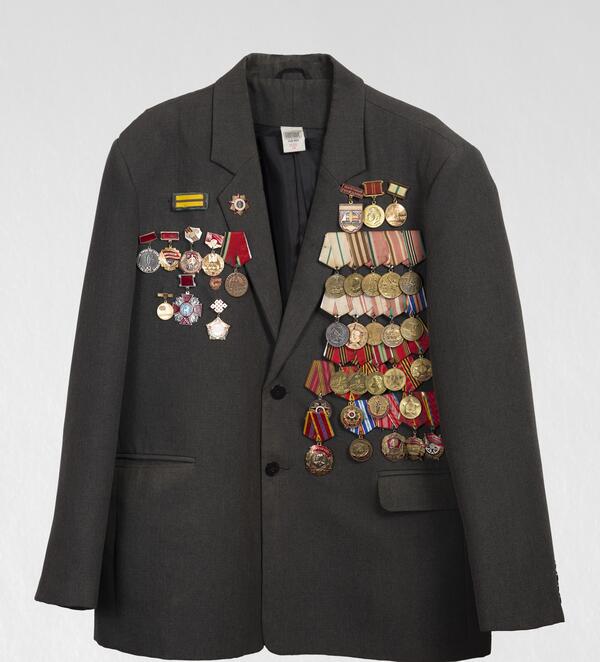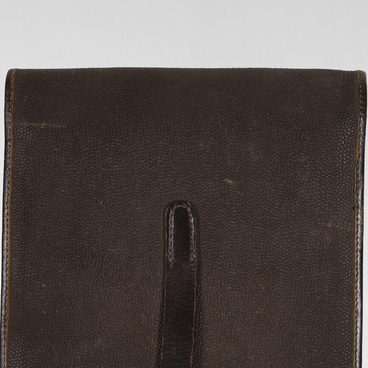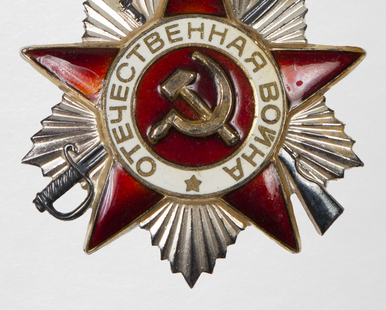At the exhibition in the Zimovniki Local History Museum, one can see the jacket of Efim Tolstykh, a veteran of the Great Patriotic War, with dozens of state orders and medals, including the Order of the Patriotic War of the First class and the medal “For the Defense of Leningrad”. The jacket with the awards was given to the museum after the owner’s death.
Efim Tolstykh was born in Rostov region in April 1922 at Arkhipovka khutor (a single-homestead settlement) of Veshensky region. Tolstykh graduated from a seven-year school in the village of Karginskaya and in 1938 entered the Mining School in Sverdlovsk (today known as Yekaterinburg). After finishing his studies, he was sent to work as an electrician to a mine.
In March 1941, a few months before the beginning of the Great Patriotic War, Efim Tolstykh was drafted into the Red Army. He was assigned to the 140th rifle regiment, 81st communications company in Estonia. In summer 1941 there already was a front line there, and fierce battles with Hitler units were taking place.
During the battles, Efim Tolstykh was wounded twice. After leaving hospital, he went to study in the Leningrad military communications school, and in April 1945, he returned to the front to join the 58th separate communications regiment. The soldiers were based not far from Leningrad, in the town of Vyborg. After the victory of the Soviet troops, Efim Tolstykh moved to the Zimovniki district. There he married and raised three sons.
In Zimovniki, Efim Tolstykh got a job as a senior technician at an amplifying station, and in 1952 the representatives of the Communist Party appointed him a propagandist for the district party committee. Tolstykh worked with the local people: he lectured on Communist ideas and organized discussions. In this position, he remained until 1953, at the same time receiving education at the Georgievsky Technical School of the Ministry of Agriculture.
From 1953 to 1963, Tolstykh worked as director of the local branch of “Selkhoztekhnika” and then for two years was director of the oil depot. In 1966, Efim Tolstykh became a chairman of “Mekhkolkhozstroy”. Before retiring, the former communication systems operator worked as an engineer, and afterwards as a fitter, crane operator and order selector.
Efim Tolstykh was born in Rostov region in April 1922 at Arkhipovka khutor (a single-homestead settlement) of Veshensky region. Tolstykh graduated from a seven-year school in the village of Karginskaya and in 1938 entered the Mining School in Sverdlovsk (today known as Yekaterinburg). After finishing his studies, he was sent to work as an electrician to a mine.
In March 1941, a few months before the beginning of the Great Patriotic War, Efim Tolstykh was drafted into the Red Army. He was assigned to the 140th rifle regiment, 81st communications company in Estonia. In summer 1941 there already was a front line there, and fierce battles with Hitler units were taking place.
During the battles, Efim Tolstykh was wounded twice. After leaving hospital, he went to study in the Leningrad military communications school, and in April 1945, he returned to the front to join the 58th separate communications regiment. The soldiers were based not far from Leningrad, in the town of Vyborg. After the victory of the Soviet troops, Efim Tolstykh moved to the Zimovniki district. There he married and raised three sons.
In Zimovniki, Efim Tolstykh got a job as a senior technician at an amplifying station, and in 1952 the representatives of the Communist Party appointed him a propagandist for the district party committee. Tolstykh worked with the local people: he lectured on Communist ideas and organized discussions. In this position, he remained until 1953, at the same time receiving education at the Georgievsky Technical School of the Ministry of Agriculture.
From 1953 to 1963, Tolstykh worked as director of the local branch of “Selkhoztekhnika” and then for two years was director of the oil depot. In 1966, Efim Tolstykh became a chairman of “Mekhkolkhozstroy”. Before retiring, the former communication systems operator worked as an engineer, and afterwards as a fitter, crane operator and order selector.



